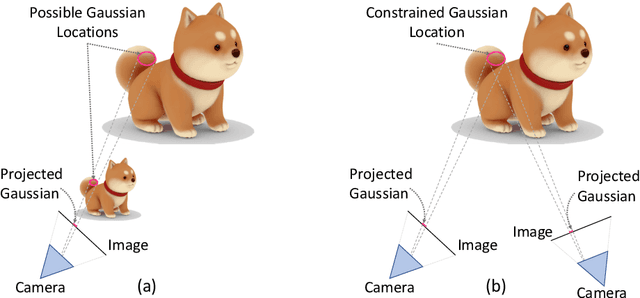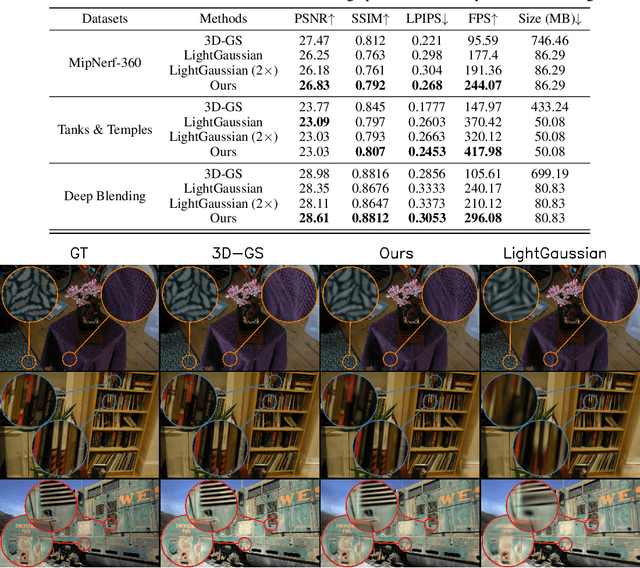Allen Tu
Speedy-Splat: Fast 3D Gaussian Splatting with Sparse Pixels and Sparse Primitives
Nov 30, 2024Abstract:3D Gaussian Splatting (3D-GS) is a recent 3D scene reconstruction technique that enables real-time rendering of novel views by modeling scenes as parametric point clouds of differentiable 3D Gaussians. However, its rendering speed and model size still present bottlenecks, especially in resource-constrained settings. In this paper, we identify and address two key inefficiencies in 3D-GS, achieving substantial improvements in rendering speed, model size, and training time. First, we optimize the rendering pipeline to precisely localize Gaussians in the scene, boosting rendering speed without altering visual fidelity. Second, we introduce a novel pruning technique and integrate it into the training pipeline, significantly reducing model size and training time while further raising rendering speed. Our Speedy-Splat approach combines these techniques to accelerate average rendering speed by a drastic $6.71\times$ across scenes from the Mip-NeRF 360, Tanks & Temples, and Deep Blending datasets with $10.6\times$ fewer primitives than 3D-GS.
PUP 3D-GS: Principled Uncertainty Pruning for 3D Gaussian Splatting
Jun 14, 2024



Abstract:Recent advancements in novel view synthesis have enabled real-time rendering speeds and high reconstruction accuracy. 3D Gaussian Splatting (3D-GS), a foundational point-based parametric 3D scene representation, models scenes as large sets of 3D Gaussians. Complex scenes can comprise of millions of Gaussians, amounting to large storage and memory requirements that limit the viability of 3D-GS on devices with limited resources. Current techniques for compressing these pretrained models by pruning Gaussians rely on combining heuristics to determine which ones to remove. In this paper, we propose a principled spatial sensitivity pruning score that outperforms these approaches. It is computed as a second-order approximation of the reconstruction error on the training views with respect to the spatial parameters of each Gaussian. Additionally, we propose a multi-round prune-refine pipeline that can be applied to any pretrained 3D-GS model without changing the training pipeline. After pruning 88.44% of the Gaussians, we observe that our PUP 3D-GS pipeline increases the average rendering speed of 3D-GS by 2.65$\times$ while retaining more salient foreground information and achieving higher image quality metrics than previous pruning techniques on scenes from the Mip-NeRF 360, Tanks & Temples, and Deep Blending datasets.
Addressing Bias in Visualization Recommenders by Identifying Trends in Training Data: Improving VizML Through a Statistical Analysis of the Plotly Community Feed
Mar 09, 2022



Abstract:Machine learning is a promising approach to visualization recommendation due to its high scalability and representational power. Researchers can create a neural network to predict visualizations from input data by training it over a corpus of datasets and visualization examples. However, these machine learning models can reflect trends in their training data that may negatively affect their performance. Our research project aims to address training bias in machine learning visualization recommendation systems by identifying trends in the training data through statistical analysis.
 Add to Chrome
Add to Chrome Add to Firefox
Add to Firefox Add to Edge
Add to Edge